6-8-19
Borders, Raindrops: Riding the White Wave at SEEfest LA
By Diane Sippl
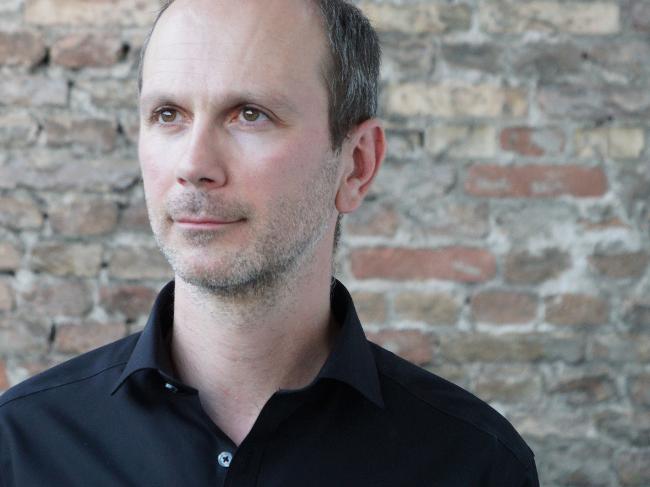
When I left the theater hall after the screening of Borders, Raindrops at SEEfest 2019, the 14th annual South East European Film Festival of Los Angeles, I bumped into Vlastimir Sudar, there to represent that film, in the lobby. I was glad to share with him my excitement that he had given us such an inspiring protagonist, Jagoda (Kristina Stevović Obradović), a female philosophy student who returns to her homeland, the former Yugoslavia, for a summer visit with cousins in Montenegro and in Bosnia and Herzegovina. Dr. Sudar (both he and co-director/co-writer Nikola Mijović teach film studies in London) told me something fascinating: “You know, we had a tradition in our country, of a kind of mythical fairy who helped and soothed people in trouble, and it was always a woman. She was called upon to solve our problems.”
That was enough to get me to press him for an interview. Borders, Raindrops is Sudar’s first feature film, and he himself is an émigré from Sarajevo. I was eager to peel back the layers of this work of scintillating, authentic, and highly relevant cinematic poetry with the creator himself. What follows is an expansive talk about the film’s multiple aesthetic dimensions, which achieve marvelous results, and also its context within contemporary history and world cinema.
KINOCaviar I’m drawn to the incredible lyricism of Borders, Raindrops. How did you decide to create your film in this way?
Vlastimir Sudar It’s important that the approach reflect the bigger ideas that the film carries. The lyrical approach is one we wanted to use for number of reasons. The first is to reflect on the space, which is now deprived and is slowly becoming more and more abandoned. This elegiac tone is almost an ode to the space that is fading away. Also, obviously, it’s part of the culture; we’re very much invoking a place that, throughout history, built its identity with epic and oral poetry, so by all means, lyricism fits the bill. It fits what the story should be about.
With the resources Hollywood has, it’s much easier to create formulaic, shot/counter-shot narrative stories that you can amplify in the post-production, with the effects and everything; whereas to create a successful lyrical film—to create scenes that will speak through their atmosphere—is actually a lot more challenging, and I empathize with all the filmmakers who fail there, because to be perfectly honest, as a first-time director, I was often worried, asking myself, ‘Will this actually work, or will it look a little like a wannabe Tarkovsky? It’s a matter of getting it right. I’d probably single out Claire Denis for success here, but even she has hits-and-misses. This is the thing—when it works, it works beautifully and nails you down to the floor, but when you miss… such is art. I have to say Beau Travail was an important influence for us. It’s an amazing film, so hat’s off to it.
KC Why do you show us Jagoda, your protagonist, reading the books by Jean Baudrillard and Ernesto Laclau? Why these texts in particular?
VS We asked ourselves, as a character, what would Jagoda be doing? By all means, we wanted her to be wise, and she is wise, although she shows it very gently—her presence and her effect on the whole situation is soothing, and only a wise person can achieve this. So perhaps it’s a touch of a cliché, but if we wanted to signify wisdom, what else could she be but a good philosophy student?
KC But it’s so unique these days. I didn’t find it to be a cliché at all.
VS Well as for your question—Symbolic Exchange and Death, by Baudrillard—he’s most known for his notions of the symbolic world and the mediated world, and for his famous or infamous statements that reality is now what is mediated, and what is not mediated is not reality any more, which caused a lot of stir. But he also talked specifically about the Balkans, which we can take as an example of the significance of the symbolic world. The Balkans are now much better known globally through their mediated representation than through, potentially, people’s first-hand experience of the space. Our film, in many respects, revolves around these ideas so as to invert the mediated expectations of the Balkans. And, as many people have pointed out, in the film we have plenty of moments in which we create the situation of tension, when one feels that something terrible is going to happen, because these are the Balkans and ‘terrible things happen in the Balkans’; but we then step back and actually show that nothing bad is going to happen. These are people just like any others. It’s the way images are presented that matters. We thought that Baudrillard was key there, and that putting him first permeates—even almost anticipates—what is going to come in our film.
KC So Baudrillard calls up the old Yugoslavia as we know it—not the old country before the war, but the world of the war, Yugoslavia as war—as most people know it, but you’re bringing it up as a critique and a question in the film.
VS Exactly. And we believe that this critique is embedded in Baudrillard’s writing. He was actually pointing it out a bit, so having him near the opening of the film signals this kind of thinking.
KC But what about Laclau, because I don’t know his work.
VS With On Populist Reason, I think we wanted to be a bit cheeky as we used it in 2015 when the scene was filmed, but by that stage the book was already catching traction. Laclau had unfortunately died a year or so earlier, but the book is now quite significant because he actually anticipated populist movements, on both the Left and the Right, and many are now looking for the reasons, on the whole spectrum—you know, the victory of Tsipras in Greece (Socialist Alexis Tsipras, surprisingly elected as Prime Minister), but equally Trump and Brexit in the UK—this kind of reaction to the crisis of contemporary democracy. So we thought that might be interesting because Jagoda is wise and she sees the broader spectrum of things; she’s a city girl who brings all this with her. She’s in the know.
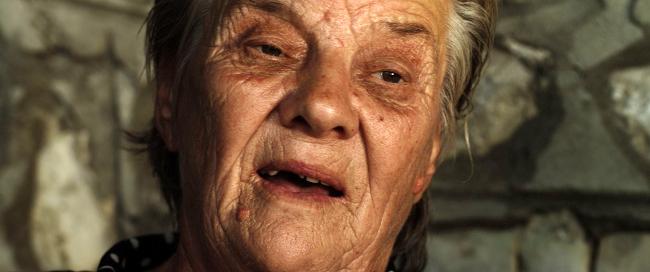
KC So this really updates the whole picture. Yet why present Jagoda as a philosophy student and not a singer or a barmaid or someone local who’s just ‘one of us’? Why make her special? Does it have to do with her implicit role as the ‘Mountain Fairy’?
VS Yes, definitely. We thought, if she is a contemporary Mountain Fairy, if she’s got the quality of being ethereal, then somehow, she has to be a philosophy student. Now again, a barmaid—why not?
KC But you have one, and you have a singer. Beyond these two famous philosophers, I personally love the elderly woman in your film who talks about what socialism did for her people. It’s a line—her little three-sentence spiel—that we never get to hear, and from a country whose history for nearly half the 20th century looms so large as the pinnacle of socialism, as the place within the old Soviet bloc where socialists—proponents and opponents alike—preferred to be. Europeans from both the East and the West loved to visit. So I think there’s call for her remark. You have this point of view spoken by someone who is actually of the location, so it’s such a nice way of integrating professional and non-professional actors and getting that authenticity of the region. Did it matter which half of the film, from Montenegro or from Bosnia and Herzegovina, that comment came, or could it have been uttered across all the regions you touched?
VS Well we felt it fit across all the regions because you have a Bosnian woman who married a Montenegrin and moved to Montenegro, so she, in and of herself, is a little symbol of the fact that actually, the spaces are connected. We found this elderly lady in the village where we were filming the scene with the house, so it seemed quite right that she should be in the film, and that we should give her space to say what she had to say.
KC It comes across as very believable from the lips of a local. Her face, her way of talking, is so convincing. You can’t challenge what she says. There’s no way to deny her beliefs, what she feels and knows, all her life, with all her wrinkles.
VS It’s also about the conversation between generations. Jagoda is now of a generation that simply will not remember such things, so that kind of link gets established as well, in time, and films are the best for this, because they can allow us to look back and reflect.
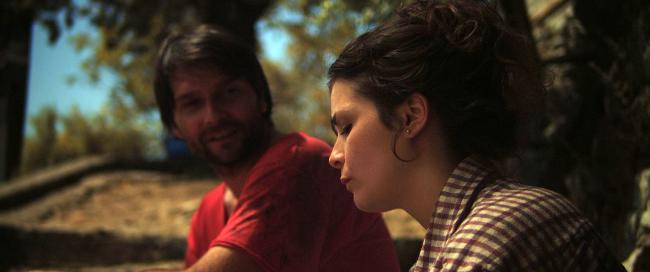
KC Talking about these links, I woke up this morning with a visual rhyme in my head, and this is how I know that a film is a good film. When the impressions—the visual images or the sounds or the melodies—stick, day after day, I know that the film worked. I woke up with Zdravko’s distinct way of dancing before my eyes. (At first, I didn’t recognize him as the same character, but later he apologizes to everyone at the bar for being tipsy that night and dancing so wildly, and I saw that indeed it was Zdravko.) His movement is very dramatic; he uses a motif of slugging in his style. I realized that later, we see the boys shooting each other as they play, and then wrestling each other and really damaging each other’s faces. So when you talk about the generations, and how Jagoda’s is a younger generation, it’s interesting that Zdravko remembers the war, so he’s dancing that way, even unconsciously; yet the boys are very deliberately playing this war game but couldn’t possibly have a visceral memory of the fighting themselves. So when you talk about the legacy that gets passed down… you do show these boys as on the cusp of…
VS …being formatted like that. Well, that definitely is part of the story. Sociology has long been concerned with this. How do we get formatted by the environment? How do we, from an early age, adopt prejudices of the past? Part of the story is that the boys are vulnerable to this, and there is even a sort of repartee by the Border Guard, who at one point says, ‘Who taught you this? Some old grand-dad? Where did you learn this behavior?’ So this connection between the past and now is somehow embedded in the story; it’s something we comment upon. And this is why Jagoda is our Mountain Fairy—because she comes in to sort of ‘repair’ the wrongs of the past and also to soothe everyone as well, to alleviate all the…
KC Until she flirtatiously announces to the Border Guard that Luka is her ‘little cousin’ and not her ‘boyfriend’ (as she had told Luka earlier)—that was very nice humor!
VS Well, she’s allowed to have her attention, too!
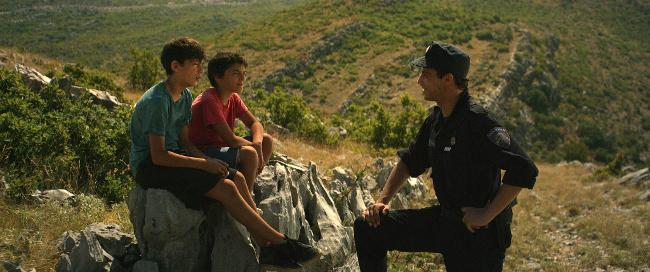
KC And Luka was very good at mimicking her—it was nice acting! Now a big part of the film for me is the way you use music, from the very first song that is sung. It’s wonderful. Then I think it’s the same song, a refrain, moments later, with another set of words—that are a lot juicier, from a crusty old guy like that! The lyrics are so soulful, for all the songs, but on top of that is the fact that you do translate them, so we are meant to know those lyrics, and we’re meant to do something with them as we ‘feel’ the film. Some of them seem as if they were written for the film, the way they nail the themes. So how did you choose the music—or was some of it written for the film? How did that work?
VS None of it was written for the film; however, the songs were already there in mind, even when the script was written. I would say that at least 60% of the songs, if not more, were already written into the script, so actually we knew that the lyrics were going to be used to regulate the narrative. And I have to admit, we see that in filmmaking now quite a bit—that some songs are subtitled because they participate in the narrative. That meant that in the editing we chose precisely those lines from the songs that hit directly on what was going on. The lyrics you mentioned are sung with the folk instrument called a gusle—these singers are like African scribes, who play their one instrument as they comment on quite a lot.
KC Like a griot—that’s what I thought as I heard him, and I asked myself if they had them in Yugoslavia…
VS Yea, yea, in Montenegro, especially, this culture is maintained and valued, definitely. The original song this man sings is about half an hour long, but we couldn’t over-do it, because then the film becomes about his performance rather than the performance being part of the film.
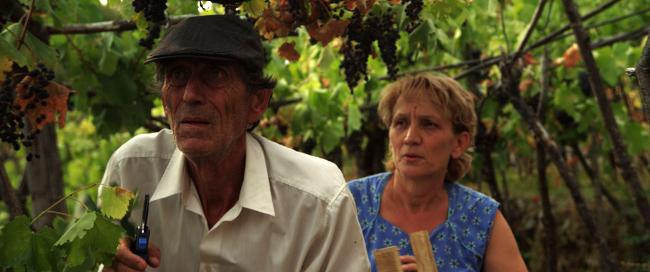
KC You told me that there is, in the region, the tradition of the Mountain Fairy. So did you have that in mind from the very beginning?
VS Absolutely, because the way we worked was, if you have two stories and some kind of epilogue, we need something that will strongly bind this together.
KC So she exists in all three of those cultures?
VS Exactly—all the mountain people. But this is where we were—Montenegro, Herzegovina and Bosnia, and Croatia, that part of Dalmatia.
KC And where did you grow up?
VS I was born and brought up in Sarajevo, Bosnia.
KC So did you have that fairy in your childhood?
VS Oh, yea—and we had to read the epic folk songs in school.
KC So they’re part of the literature.
VS Yea, exactly. Not only that, in the former Yugoslavia, the guy who reformed the language in the mid-19th century when the Romantic movements were blossoming decided to use this epic poetry as the base for the literary language, as opposed to using a number of texts written in old Slavic, by posh and educated people. The idea of Romanticism was to make the language accessible to all, so he actually used the traditional epic poetry as the base, for grammar and everything else.
So yes, we studied it, we know it. When we were in puberty and mischievous teenagers, we always took a mickey out of it, but now we go back to it and value it in the pure sense, because for a region which, of course, is patriarchal and somewhat macho, there are features of the traditions that we can see as culturally redeeming. The Mountain Fairy is always a woman, and she always actually resolves precisely those issues that men, with their machismo and their fighting, can’t.
So we thought that she’s adequate for the story and for the problems that we have—that we need a Mountain Fairy; she’s wise enough to cut through their conflicts and soothe them on all those levels—the political, with the borders; the personal, with Zdravko, who now has no self-confidence because he’s the last man in the village; and with the childhood issues of the boys, who are abandoned, and so on.
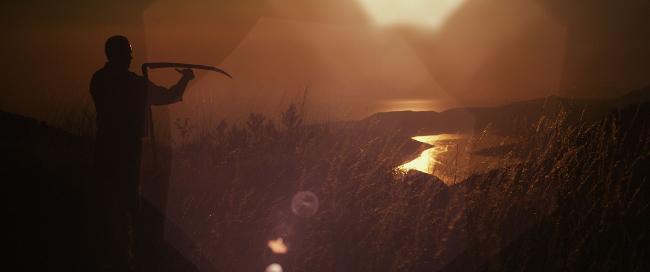
KC What role does the sea play, versus the mountains? There are remarks in the film that the sea is no good for people in Bosnia and Herzogovina. Is that because they, in general, are more remote from it, or that they don’t know what to do with it, or that they have a particular attitude about the sea?
VS I think it’s about economic fracture, really, and it’s about how economies are actually devised. The sea generates quite a lot of income in that region, but as with most resources that generate quite a lot of income, especially in that place, post-socialism, the profits from it go to very few people, so that there is a strange sort of alienation from the coast and the sea. People often see that the sea is there, but it doesn’t belong to them, and it can be prohibitively expensive for them. Part of the film’s comment on the economics of the region contains a reminder of this situation.
And then because of the war and the conflict, there is also an added level of discomfort, if I may say, and a level of alienation, because there’s quite a lot of fighting going on around. And this is where the borders are, so for the Bosnian kids, in particular, they have to enter Croatia to get to the sea. So there is that little conversation about the swimming pool in the town.
KC So there still is the friction, and the danger, and the discomfort?
VS Yea, yea, yea, and on that level our film also has that documentary note. And things have also gotten further complicated by the fact that Bosnia and Montenegro are not in the EU, while Croatia joined in 2013. So this is now not just a border between countries; there is a border between the bloc and the countries who are not in the bloc.
KC Well you begin and end with the sea, so I was asking myself what that shell does when it wraps around your film. You know it’s a very overt gesture to start with that frame of the Adriatic Sea filling the screen. And knowing that the film is called, Borders, Raindrops, there are so many ways to interpret metaphors of water, but you look at the sea and feel it’s the collection of all the raindrops, and it should be just endless and open to everybody. Yet then you think of the sea today, actually not too far from there, which is full of dead bodies of people who have tried to escape from other places—Africa, the Middle East—and it’s a ‘no-man’s-land’ of a sea.
VS Exactly, and there are still border disputes. For example, Slovenia and Croatia still have a border dispute about the sea. So here we go…. Well when you just look at that opening shot, it shows that there’s this vastness of water, a natural vastness, that we have managed to spoil, like lots of other things.
But also, we wanted another touch there. Although the film is such that we like people to interpret it in their own way, one of the most common questions, especially back in the former Yugoslavia, is, ‘Alright, is the ending optimistic, or pessimistic?
It’s very funny—when we showed the film in Paris there was a Croatian director there who lives in Germany, and he said, ‘Well, after the film, emotionally I felt it was optimistic, but when I think about it rationally, it’s pessimistic.’
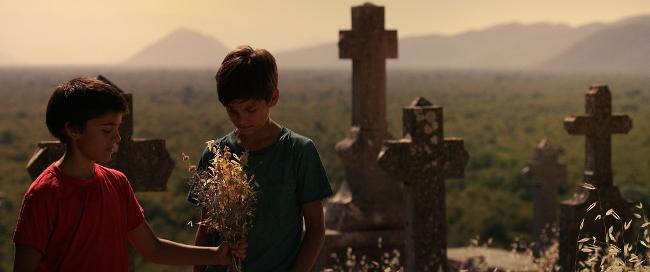
KC I have two responses. The first is that there are two objective aspects that you do show that shouldn’t be ignored by people when they read the film, on any level. One is that we don’t actually see a lot of physical destruction through the whole film until we get to Croatia in the Epilogue, and there, everywhere the camera goes, we see it. So this is the first time that we’re seeing so much evidence of the physical results of the war, and then again, it’s the first time that we’re seeing each of our characters with a companion and all peacefully together. What’s more, the companion for the Montenegrin Zdravko is from Moldova; the companion for Jagoda, who is also from Montenegro, is from Croatia; and then the two boys are both from Bosnia and Herzegovina visiting Croatia, as the sign of the future. So the ‘enemy territory’ is the only place where we see the harmony, objectively, with human beings of mixed cultures in couples sitting side-by-side with other culturally mixed couples enjoying the sun and the sand and the water. It’s as idyllic as it gets, even if in the background is all the destruction (as if the mise en scène is layered in time, but this is location shooting). We do have them posed there, basking in pleasure, so I take it as an affirmative statement by the director. But the other thing that happens is that Jagoda gets up and swims into the ocean like a fish or a mermaid, and she’s there in the water, uniting everybody—that’s the last image. You can’t deny those images.
VS Well, about the ending—the sea at the beginning, the sea at the end—Jagoda goes back into the sea as a mermaid, but at the beginning, we see the sea, and what we don’t know at the beginning but what we will know later, is that we hear her voice singing, a voice-over with the image of the sea. She’s a Mountain Fairy, but she’s also a bit of a Sea Fairy. She sings two songs, but this one in particular, she also sings later in the film when she climbs up the mountain, so that’s the link. I know it’s super-subtle; it’s there for people who will watch the film again and again.
KC And the one she sings to Luka in bed as he tries to fall asleep is a different song.
VS It’s a different song, and she actually sings that one thrice. That song is also sung when the boys are playing war in the village at the beginning of the second story, and there’s a kind of explosion, and then we see this long road where they travel, and we hear her singing. We also hear her singing that song in the first half, when they’re asleep, so it’s used as a leitmotif.
But to us the important thing is not so much which song it is as that her singing is some kind of soothing factor, in that she also comments on the narrative and the relationships.
KC It’s her vehicle, too, in a way, given what she symbolizes.
VS And it also signifies her presence even when she’s not physically there.
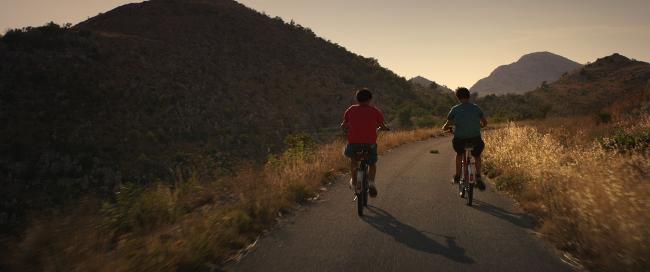
KC There are a good number of world-renowned filmmakers from the former Yugoslavia—Makavejev, Kusturica, Godina, Popov, Manchevski—but there are also those from the British tradition, because you studied in London—Tony Richardson, Mike Leigh, Ken Loach. It’s almost social realism. Your film departs a bit from the British legacy, and it’s not in the bawdy style or black humor manner often associated with Yugoslavian cinema. It’s closer to the work of some new filmmakers from around the world—Ciro Guera from Colombia; Lisandro Alonso from Argentina; Panahi or Rasoulof or Kiarostami from Iran; or even Mambéty, Sissako, and Ouedraogo from Senegal, Mauritania, and Burkina Faso. So you’re drawing from all of these international traces, it seems. Did you always know you would make a film like Borders, Raindrops, or did the idea come up for your first venture?
VS It’s a bit of everything. The first thing I have to clarify, and this applies both to me and my partner Nik, is that we are both avid cinephiles. I have a PhD in Film Studies, I teach film history and theory, and I absolutely love films. One of the aspects of cinema I love the most is that it can bring us spaces and sounds that we can go and visit, but we will always be foreign to them, because we simply are. Take the Philippines, for example—we can go there, but we’ll always be outsiders, whereas a good Philippino filmmaker catches a slice of life and brings it to us. It’s the best way for us to see how the real culture breathes, and this is what brings humanity to it. A cosmopolitan outlook comes from seeing films from all over the world, and they define a space. I wanted to make a film that would bring a flavor of a space that is not commonly seen on the screen, and when it is, it’s through a set of mediated images that emphasize only the darkest aspects of it, which I don’t think we deny in our film—quite the opposite. It’s just that we see the grim and the dark, but also lots of other layers to the space.
I’m definitely a big fan of Claire Denis; I love new Argentine cinema—Lucrecia Martel—and the Uruguayan Israel Adrián Caetano. They define space culturally. I remember a film called Bolivia by Adrián Caetano set in the urban spaces of Buenos Aires, which could be anywhere in the world, but at the same time, you immediately know you are there. This certainty can be created, and it’s something I want to do as well.
But I’m also influenced by this whole British realist school. It’s not directly the way we made our film, because the results come out differently, but this approach by Mike Leigh, which is almost documentary-like—to get professional actors into character but then to place them in a real situation—is used in Britain a lot by that specific school, and it’s something that we do as well. We mentioned the elderly lady who lives in the village, and we brought in the actress Kristina Stevović for Jagoda’s character to inflame the conversation, to foment it. So in methodology we learned a lot from the British School.
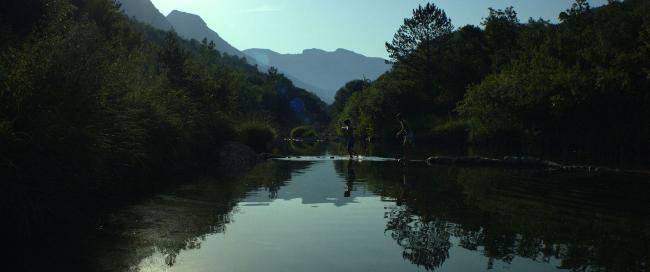
KC Many people have left in Borders, Raindrops, including you, and you’ve created this love letter to your homeland. I’m curious when you left, and why you left, and how it could impinge on your career—the fact of being an émigré—does it ever go away, or will it be behind every film you make, do you think? What is the sensibility these days in the global world? Is this the way the world is going to be from now on? Is everyone going to be an émigré, and remember that feeling, with longing, or what?
VS I would say so. I left my country for the first time when I was six, with my parents on holiday. Europe is a bit like that; other countries are very close. For an American in the Midwest, everything is far away for travel. London, where I live, is only about two hours away by plane from the former Yugoslavia, so from my generation, I think the world has shrunk. All this longing for the former Yugoslavia, for this space, is probably more a result of the fact that it has gone through a tremendous trauma. If everything were perfectly fine and prosperous within the former Yugoslavia, I might not have been so inspired; I might not have felt both the intellectual and the artistic responsibility to reflect and comment on what is going on. I felt strongly that this film needed to be made, and the fact that I’m a displaced person there felt like an advantage because I was an insider but at the same time an outsider.
I believe the book I wrote on Aleksandar Petrovic and certainly this first film I made, Borders, Raindrops, are to a great extent reflections on this national trauma. They are also my personal attempts to deal with everything that has happened. And let’s wait and see. It’s hard to say that everything I do will look back at that history, but certainly it is something that has informed my being to a great extent and will probably remain a significant landmark in my thinking.
KC And in a way, the opposite is true: the film is very accessible for people in this younger generation—and I can include myself in it because my level of knowledge is the same as theirs—who don’t know, to this day, exactly who was fighting against whom, and what the issues were. I could not teach that lesson.
VS I have to admit, we often get lost at that.
KC I didn’t know that Montenegro had any problem with Bosnia and Herzegovina.
VS It was more with Croatia—around that area.
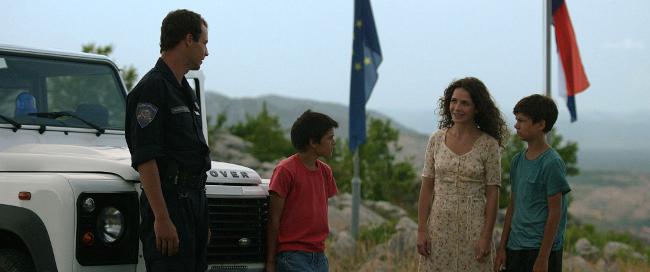
KC I thought so. It’s puzzling, but Borders, Raindrops does send across the idea that the conflict was complex, and that there’s no way to slap a stereotype on the war and say, ‘This was the reason, these were the people, these were their issues—which is a cautionary in itself.
VS Definitely. I think that very unfortunately, the notion of borders has, in the meantime, become an emerging issue. At test screenings in London, I noticed how much our story about ex-Yugoslav borders has now become a broader issue. We knew that there would be a universal note to it, because of the Croatians and the EU, and we have the EU flag there, and this idea of Europe as a fortress is physically tackled in our film. The fact that similar things will happen in the United States and pretty much all around, and that this regimental restrictiveness of borders will become a universal story, is rather defeating, but it is something that people now read in the film regardless of whether they are familiar with the ins and outs of Yugoslav politics.
In London, someone came to me who had done some volunteer work in Palestine, and she said that she was at that same point in Golan Heights, I think it was—the point where the Jordanian army is there holding a post, and the Syrian army is there holding a post, and the Lebanese army is there holding a post, and the Israelis are not even there, but you have three other countries. It’s the same as in our film. They completely hold this border in the middle of nowhere.
KC London—I remember when Margaret Thatcher had road blocks in the city, streets closed, with Pakistani issues, Caribbean issues, so that certain quarters couldn’t be entered and people had to go around all the time. They were always closing and blocking off streets, within the one city, London, and we always think of it as some remote country’s problem.
VS Our editor, who’s English, made a joke at one point and said, ‘I can see a re-make of this film in Scottish and English, if Scotland leaves, you know—with Ewan McGregor as the Scottish Guard, or something… So unfortunately, we’re seeing more of it.
KC But I think your film in no way contributes to that misery, and your unique sensibility is very difficult to pull off, because the minute you pick up the topic, you’re walking on a mine field, literally, with filmmaking and art. I’m wondering what other reactions you got to your film that might have surprised you.
VS All of them, because so far, everywhere we’ve been, people have loved our film and really accepted it. In Paris at a film festival we won two awards, but the Special Mention from the Young Jury, which was actually the largest—I think it had eight members—and the explanation they wrote about the film really touched me. They said our film speaks to young generations who are bringing change and a new outlook to the world. With Jagoda, that’s all in the film.
KC And the boys—
VS Precisely. We never really thought when we sat down to write the film that we would use Jagoda and the boys to send a message to the world’s youth, but young people have recognized themselves in the film, they are loving it, and that’s such a big complement.
KC That’s really carrying the torch. I read that you were inspired by painters of the region. To me, cinema is visual, and I really gravitate toward the image, and the beauty of the camera work, the movement, the framing, the composition, the lighting—and if a film doesn’t consider those elements, then it’s not working as cinema. Your interiors were so golden, shaded and warm—there’s an aura, almost, in the whole film, as if in a magical tale.
VS The paintings are influential because the look of Borders, Raindrops was derived from a painter, Petar Lubarda, who has really thrived on a famous series of paintings of the mountains—the very ones we were filming. He literally painted the light in the place, which made these mountains look as magical as we wanted them to be. Lubarda was one of the great painters of the socialist period, although he died in 1977, I think. Sometimes he brings the paintings to the edge of abstraction, something that could not quite fit the realist aspect of our film, but that’s how we aimed to present this unforgiving but at the same time beautiful space, as it has its own aura and magic.
KC Now, it all fits—with the songs, the purpose, the setting—and there are a couple of other elements that stand out for me. I’ve never seen a film in which people take so many naps. It looks like a kind of dolce far niente, and it fits with the magical tone or dreaminess of the film, but also, it seems very logical, because it does look hot; but I’ve rarely seen it done so well, this use of sleep to convey peace—a person at peace with himself, maybe with nightmares, like the boy. Yet these people look so innocent and at rest, and it gives a subliminal message in and of itself, for the whole film.
VS Thank you, very true.
KC It’s so golden. But also, I noticed motifs—the animals, used very nicely, including the donkey at the end, but also these kinds of parallel scenes, or rhymes, if you like, of eating the pomegranates side by side in Montenegro and eating the watermelon side-by-side in Bosnia and Herzegovina—and they both have these seeds, and they’re both red, and they’re both luscious. In the hot summer, what could be better, in each case? These were perfect ways to handle food scenes and to bring the sensuality to the film. It was really poetic.
VS Thank you so much. And yes, there are plenty of scenes that rhyme between the first and second parts, again, in view of bringing it all together.
KC How do you two directors work together?
VS We had slightly divided roles. Nik, my friend, took more charge in the first part, in Montenegro, because he’s from there, and I took more charge in the second part, in Bosnia and Herzegovina, because I’m from there. So everyone had his own space, but we were working together to lock it all into one piece, which I believe it is.
KC Well there’s a lot of unity in it—even Katerina Witt, my favorite ice skater, because her costume looked as if she were from a folk or fairy tale.
VS I have to say everything there fell into place. Yea, the music for her performance is a csárdás, a famous Hungarian folk song (popular throughout the entire region). It’s funny how that fit, because it goes with the scene in which the elderly lady talks about how wonderful socialism was, and then from that point we move to the Sarajevo Olympics of 1984, which was probably the pinnacle of the socialist success within the former Yugoslavia, and then not only that, but we cut to a point where an East German ice skater defeats the American one for the first position, so that was a little moment of nostalgia. But at the same time, I have to reveal one tiny little thing: the scene we go to right after that is Zdravko being alone, so we also hope to have this implicit criticism of nostalgia that one has to be wary of—it’s a conversation with oneself.
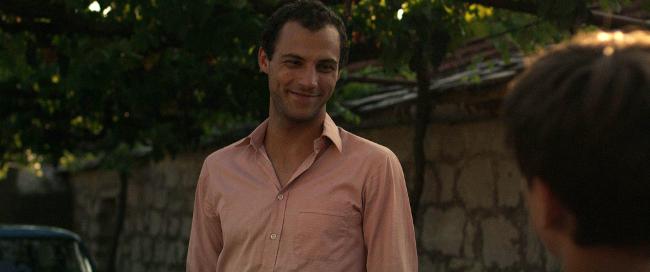
KC And that’s a rhyming scene, too, with the action of the Croatian Border Guard; both men are alone.
Was it a deliberate choice to have the blond barmaid be from Moldova, so you could show someone from even further away? Who comes to that region today?
VS This is also a slight cinema vérité choice because there were quite a few Moldovans working in Montenegro, since their country is even more economically deprived than Montenegro at present. So migrations carry on, and the important thing is that our Zdravko embraces the migrants and they find common ground, they converse, and they learn about each other.
KC And I like that the Mountain Fairy disappears once her job is done, for example, in the café. She was a vehicle for Zdravko.
VS She’s awakened him—in a good sense. They sing in the car, and all that. This is also something we played with, because she is his cousin, and then we built all this sexual tension between them because she’s only a medium; she will only bring him back to where he wants to be.
KC And you even have the parallel of the sexual tension with the boy, so it’s two relations that can’t happen, two cousins who are both off-limits, as if to force them to embrace others beyond their “kin” in the sense of ethnicity and nationality.
VS And then the older cousin, Zdravko, sends the younger one, Luka, the poster of Katerina Witt—it’s all in the process of growing up!
KC Yea, that’s a nice link…
VS Well, the links between generations work on multiple levels.
KC Your film is really a cinematic poem. And I know exactly how difficult it is to put it over to people who are completely ill-prepared to receive poetic cinema, wouldn’t know it if they saw it, and are not looking for it.
VS It’s a very gentle film, and we always thought it was going for the arthouse. Certainly that’s what it is, but in the arthouse circuit we had some disappointment precisely because it’s subtle. I guess everyone is into this Michael Haneke and Lars von Trier style—but nobody in our film chopped anybody’s head off or cut their genitals….
KC Which can be found in the Yugoslavian tradition, too—that black humor and raucous behavior and vicious.
VS But that’s what we definitely distanced ourselves from. I certainly studied a lot of old Yugoslavian cinema, and we certainly learned from it, but when we showed the film in Belgrade, one member of the audience came and said, ‘We used to have a Black Wave in Yugoslavian cinema. This is the beginning of the White Wave.’ So there is truth in that.
KC Like a white flag—Peace! Don’t attack us!
VS Yea, yea. There should be peace and love. I treasure that comment.
Borders, Raindrops
Directors: Vlastimir Sudar, Nikola Mijović; Producers: Vlastimir Sudar, Andrijana Stojković, Nikola Mijović, Predrag Karlo Kalezić, Goran Đikić, Vlado Ljevar; Screenplay: Vlastimir Sudar, Nikola Mijović; Cinematographer: Miloš Jaćimović; Editor: Alexander Fry; Sound: Gabrielė Griciūtė; Set Design: Mina Burić and Tamara Tričković; Costume Design: Maria Jelesijević and Dara Mihajlović.
Cast: Kristina Stevović, Vahidin Prelić, Robert Budak, Nedjeljko Neno Milović, Ognjen Ogi Vujović, Nada Pavićević, Momo Pićurić, Marta Pićurić, Stanislava Adžović, Momo Brkić, Svetlana Vičerova, Predrag Karlo Kalezić, Aleksandar Radulović, Dubravka Drakić, Željko Milošević, Velizar Vejo Kasalica, Ana Đurišić, Branko Ilić, Isidora Radonjić, Andrej Mihailović, Dušica Bijelić, Ugo Rabec.
Color, 93 min., Serbian with English subtitles.